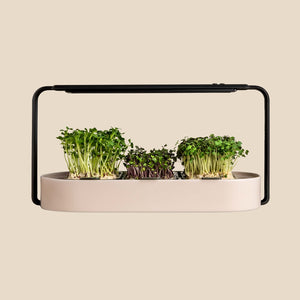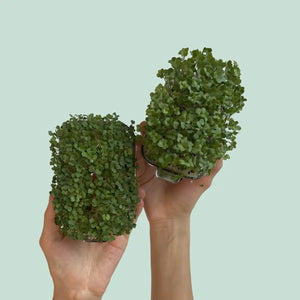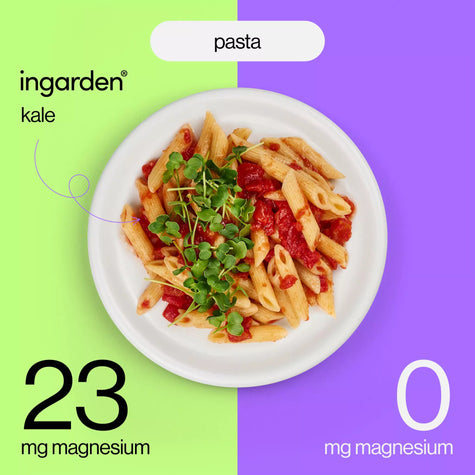Table of Contents
When it comes to making healthier choices for our diets, one aspect that often gets overlooked is the importance of consuming seasonal produce. In this article, we will explore the advantages of buying and eating fruits and vegetables that are in-season. By aligning our diets with the natural growing cycles of these items, we not only enjoy fresher and tastier meals but also support local farmers and promote sustainable agriculture.
In today's fast-paced world, where convenience often takes precedence, it's easy to overlook the significance of eating seasonally. We are accustomed to finding almost any type of produce available year-round at our local grocery stores. However, there are several compelling reasons why we should reconsider our choices and prioritize seasonal fruit and vegetables.
By opting for produce that is in-season, we not only indulge in flavors that are at their peak but also reap the nutritional benefits of these vibrant fruits and vegetables. Imagine biting into a perfectly ripe strawberry in the summer or enjoying the crispness of a freshly harvested carrot in the fall. These experiences are not only delightful but also evidence of how eating seasonally can elevate our culinary adventures.
Moreover, buying seasonal produce allows us to connect with our local farmers and communities. When we support local farmers, we contribute to the sustainability of our food systems, reduce our carbon footprint, and foster a sense of community. It's a win-win situation that benefits both our health and the well-being of our environment.
Another advantage of incorporating seasonal fruit and vegetables into our diet is the cost-effectiveness. In-season produce tends to be more abundant, leading to lower prices compared to out-of-season options. So, by choosing what's in-season, we can enjoy fresh and nutritious meals without straining our budget.
Throughout this article, we will explore the benefits of eating seasonal produce in more detail. We will delve into the enhanced flavors, nutritional value, and the positive impact on local farmers and communities. Additionally, we will take you on a journey through the seasons, highlighting the fruits and vegetables available in each period, along with tips on how to incorporate them into your meals.
Are you ready to embrace the farm-to-table concept and savor the goodness of seasonal fruit and vegetables? Let's delve deeper into the advantages and discover why eating seasonally matters!
Benefits of Eating Seasonal Produce
Enhanced Flavor and Taste
When it comes to flavor and taste, nothing beats the experience of biting into a piece of fruit or a vegetable that is perfectly in-season. Seasonal produce offers an explosion of flavors that are unparalleled. Fruits are sweeter, juicier, and more aromatic, while vegetables have a satisfying crunch and depth of flavor. This is because seasonal fruits and vegetables are allowed to ripen naturally, soaking up the sun's rays and developing their full potential.
Take, for example, a juicy watermelon in the summer or a vine-ripened tomato bursting with tanginess. These flavors are distinct and robust, leaving a lasting impression on your taste buds. By consuming seasonal produce, you can truly savor the essence of each fruit and vegetable, elevating your meals to new heights of gastronomic delight.
Nutritional Value
Besides their exceptional taste, seasonal fruits and vegetables offer superior nutritional value. When produce is harvested at its peak and consumed shortly after, it retains higher levels of essential vitamins, minerals, and antioxidants. These nutrients are crucial for maintaining optimal health and well-being.
For instance, during the summer months, berries like strawberries, blueberries, and raspberries are in abundance. These vibrant fruits are not only delicious but also packed with antioxidants that help protect our bodies against cellular damage. Likewise, in the fall, vegetables like pumpkins, sweet potatoes, and kale provide an array of vitamins, fiber, and other essential nutrients that support our immune system and overall health.
Eating a diverse range of seasonal produce throughout the year ensures that we receive a wide spectrum of nutrients, helping us meet our nutritional needs naturally. So, by incorporating seasonal fruits and vegetables into our diet, we nourish our bodies with wholesome goodness.
Supporting Local Farmers and Communities
Choosing seasonal produce goes beyond just benefiting our own health—it also supports local farmers and communities. When you buy directly from local farmers or through farmers' markets, you establish a direct connection between the food on your plate and the hands that grew it.
By supporting local farmers, you contribute to the sustainability of small-scale agriculture and help preserve farmland. Additionally, buying seasonal produce helps to reduce the carbon footprint associated with transporting food over long distances. This means less reliance on fossil fuels and a positive impact on our environment.
Cost-Effectiveness
Another advantage of eating seasonal produce is its cost-effectiveness. When fruits and vegetables are in-season, they are more abundant, which leads to lower production costs. This, in turn, reflects in their prices at the grocery store or farmers' market. By choosing seasonal options, you can stretch your food budget while still enjoying fresh and nutritious meals.
Out-of-season produce, on the other hand, often incurs additional costs due to transportation, storage, and artificial ripening techniques. By opting for seasonal fruits and vegetables, you not only save money but also support sustainable farming practices that prioritize freshness and quality.
In the next section, we will take you on a journey through the seasons, highlighting the fruits and vegetables available in each period. Get ready to discover the diverse flavors and nutritional profiles that each season has to offer!

Seasonal Eating: A Year-Round Journey
Spring Season
As the chill of winter subsides and nature awakens, the spring season brings forth an array of vibrant fruits and vegetables. During this time, you can look forward to enjoying strawberries, asparagus, peas, radishes, and artichokes, among others. These fresh and delicate offerings symbolize the rejuvenation of the earth and herald the arrival of warmer days.
Spring produce is not only packed with flavor but also offers a range of health benefits. Strawberries, for example, are rich in vitamin C and antioxidants that boost our immune system. Asparagus is known for its detoxifying properties and is a great source of fiber, folate, and vitamins A, C, and K. By incorporating these seasonal gems into your meals, you not only add a burst of taste but also give your body a nutrient-rich boost.
Summer Season
Summer brings an abundance of sunshine and an explosion of colorful fruits and vegetables. This is the season of succulent peaches, juicy watermelons, refreshing cucumbers, zucchini, tomatoes, and an assortment of vibrant berries. The options are endless, and the flavors are at their peak.
Summer produce is not only a delight for our taste buds but also helps keep us hydrated and nourished during the hot months. Watermelon, for example, is a hydrating fruit that quenches our thirst while providing essential vitamins and antioxidants. Tomatoes are a staple of summer, packed with lycopene—a powerful antioxidant linked to numerous health benefits. By incorporating these seasonal treasures into your meals and snacks, you can beat the heat while enjoying the best that nature has to offer.
Fall Season
As the leaves change color and a slight chill fills the air, the fall season brings a bounty of hearty and comforting fruits and vegetables. Apples, pears, pumpkins, butternut squash, sweet potatoes, and Brussels sprouts are just a few examples of the autumnal delights that grace our tables.
Fall produce not only adds warmth and richness to our meals but also provides an array of nutrients to support our well-being. Apples, known for their fiber content, can aid digestion and promote heart health. Pumpkins and sweet potatoes are rich in beta-carotene, which is converted into vitamin A in our bodies and supports healthy vision and immune function. Embrace the flavors of fall by incorporating these seasonal treasures into your soups, stews, and roasted dishes.
Winter Season
As winter blankets the earth with its icy touch, a different kind of produce takes center stage. The winter season offers an assortment of robust and hardy fruits and vegetables that provide nourishment and comfort during colder months. Think of citrus fruits like oranges, grapefruits, and lemons, along with cruciferous vegetables like kale, cabbage, and broccoli.
Winter produce brings a burst of freshness to the darkest days, infusing our meals with essential vitamins and minerals. Citrus fruits are known for their high vitamin C content, which boosts our immune system and helps fight off seasonal illnesses. Dark leafy greens like kale are packed with nutrients such as calcium, iron, and vitamin K, supporting bone health and overall wellness. Embrace the winter harvest and enjoy the invigorating flavors that this season has to offer.
In the next section, we will provide tips on how to incorporate seasonal produce into your diet and make the most of these flavorful offerings.

Tips for Incorporating Seasonal Produce into Your Diet
Now that we have explored the benefits and flavors of seasonal produce, let's dive into some practical tips on how to incorporate these gems into your daily diet. By following these suggestions, you can make the most of the abundance of seasonal fruits and vegetables and embark on a flavorful and nutritious culinary journey.
Farmers' Markets and Local Sources
One of the best ways to access fresh and seasonal produce is by visiting farmers' markets or connecting directly with local farmers. These vibrant community spaces offer an opportunity to engage with the people who grow your food and learn about the produce available during each season. Not only will you find a diverse selection of fruits and vegetables, but you will also be supporting local agriculture and fostering a sustainable food system.
Take the time to explore your local farmers' markets and build relationships with the farmers. Ask questions, seek recommendations, and learn about their growing practices. By establishing a direct connection with local sources, you gain a deeper understanding of the food you consume and the effort that goes into producing it. Plus, you may stumble upon unique varieties and flavors that are not commonly found in traditional grocery stores.
Meal Planning and Recipe Inspiration
Incorporating seasonal produce into your meals becomes easier and more exciting with a well-thought-out meal plan. Start by researching the fruits and vegetables that are in-season during a specific period and plan your meals around them. Consider the flavors, textures, and nutritional profiles of the produce to create balanced and delicious recipes.
There are numerous resources available online, including seasonal recipe blogs, cookbooks, and food magazines, that provide inspiration for cooking with seasonal ingredients. Experiment with new flavors and cooking techniques to fully appreciate the potential of each fruit and vegetable.
Additionally, consider preserving seasonal produce to enjoy their flavors even after their peak season. You can freeze berries, make jams and preserves, pickle vegetables, or even dry herbs. These methods allow you to extend the enjoyment of seasonal produce throughout the year, keeping the essence of each season alive in your kitchen.
Explore Seasonal Eating Challenges and Programs
Engaging in seasonal eating challenges or participating in community-supported agriculture (CSA) programs can be a great way to immerse yourself in the world of seasonal produce. Many organizations and online communities organize challenges where participants commit to consuming only seasonal fruits and vegetables for a certain period. These challenges provide support, guidance, and a sense of camaraderie as you embark on this journey together.
CSA programs offer subscriptions to weekly or monthly boxes of locally grown, seasonal produce. By signing up for a CSA, you receive a variety of fresh fruits and vegetables directly from local farmers. This not only guarantees a supply of seasonal produce but also exposes you to new and unique items that you may not have tried otherwise.
Garden and Grow Your Own
For those with a green thumb, consider growing your own fruits, vegetables, and herbs. Indoor gardening or small-scale container gardening allows you to cultivate a variety of produce right at home, regardless of the season. This way, you have direct control over the growing process and can harvest fresh produce whenever you need it.
Microgreens are an excellent option for indoor gardening, as they require minimal space and grow quickly. These tiny greens are packed with flavor and nutrients, making them a perfect addition to your seasonal meals. By growing your own microgreens or other produce, you can truly experience the joy of farm-to-table eating and savor the freshness of your homegrown delights.
Incorporating seasonal produce into your diet not only enhances your culinary experiences but also supports local agriculture, reduces environmental impact, and promotes a healthier lifestyle. By following these tips, you can embrace the flavors of each season and embark on a delicious and sustainable journey
Eating seasonal fruit and vegetables is more than just a culinary choice—it's a lifestyle that offers a multitude of benefits. From enhanced flavor and taste to superior nutritional value, seasonal produce provides us with a wealth of goodness. By choosing fruits and vegetables that are in-season, we can savor the natural flavors and reap the nutritional rewards that come with peak ripeness. Moreover, incorporating seasonal produce into our diet allows us to support local farmers and communities, fostering a sustainable food system and reducing our carbon footprint. By buying directly from farmers or visiting farmers' markets, we establish a direct connection with the source of our food and contribute to the preservation of small-scale agriculture. Seasonal eating also offers cost-effectiveness, as in-season produce tends to be more abundant and affordable. By opting for seasonal fruits and vegetables, we can stretch our food budget without compromising on freshness and quality. Throughout the year, each season brings its own unique array of fruits and vegetables, offering us a diverse palette of flavors and nutrients. By embracing the seasonality of produce, we can create delicious meals that celebrate the best that nature has to offer. So, whether you're indulging in juicy strawberries in the spring, basking in the abundance of summer's watermelons and tomatoes, relishing the hearty delights of fall, or enjoying the invigorating citrus fruits of winter, seasonal eating allows us to fully experience the wonders of nature's bounty. Incorporate seasonal produce into your diet by exploring farmers' markets, meal planning, engaging in seasonal eating challenges, and even growing your own fruits and vegetables. By doing so, you not only enrich your meals but also support local agriculture, reduce environmental impact, and promote a healthier lifestyle. Embrace the flavors of each season, celebrate the journey from farm to table, and experience the joy of eating in harmony with nature. Let seasonal produce be your guide to a more delicious, nutritious, and sustainable way of eating. Start your seasonal culinary adventure today!















